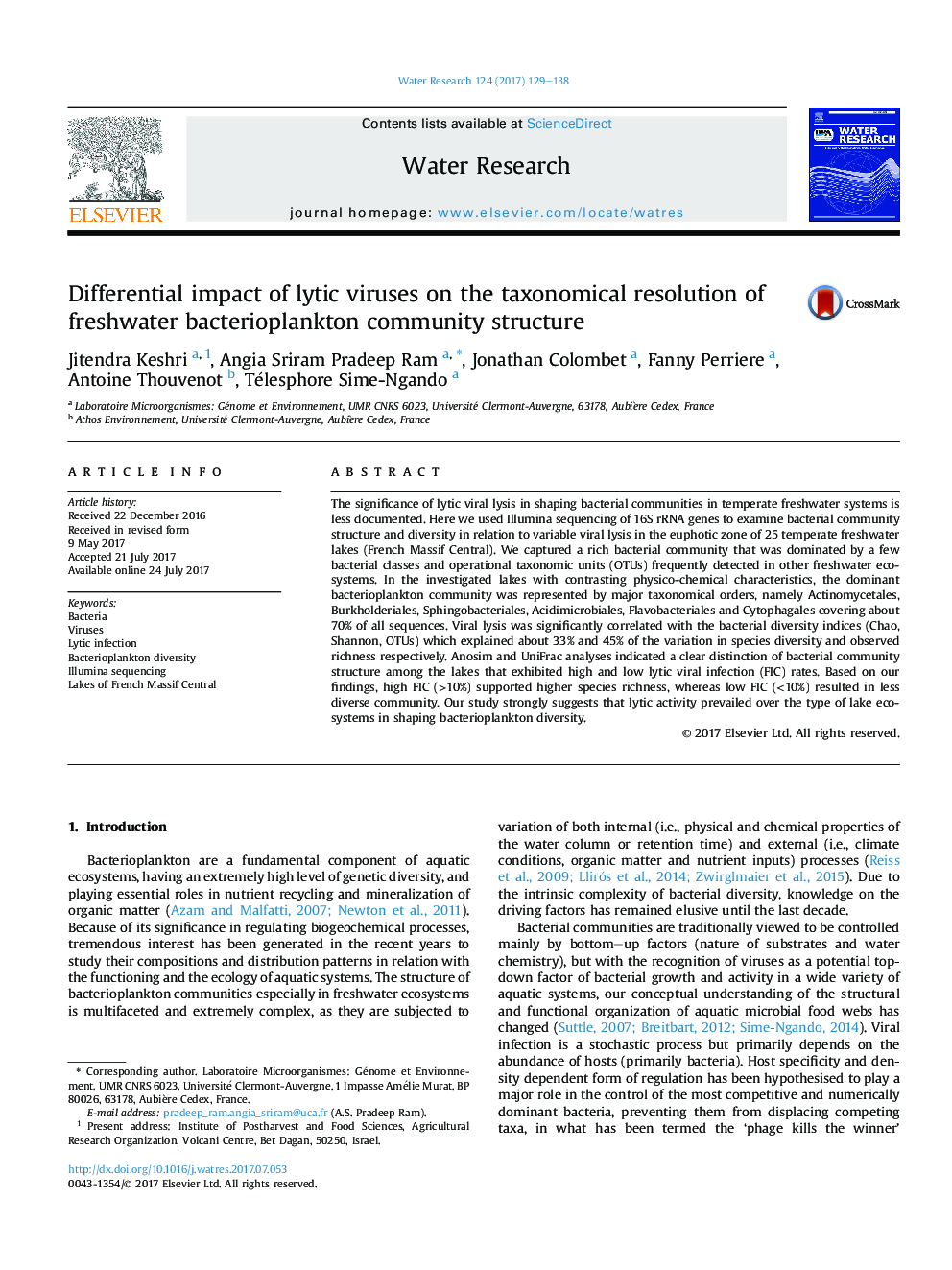| کد مقاله | کد نشریه | سال انتشار | مقاله انگلیسی | نسخه تمام متن |
|---|---|---|---|---|
| 5758710 | 1317500 | 2017 | 10 صفحه PDF | دانلود رایگان |
- Lytic viral lysis has key role in shaping bacterial communities in freshwater lakes.
- Actinobacteria, Proteobacteria and Bacteroidetes were the dominant phyla.
- Viral lysis was significantly correlated with the bacterial diversity.
- Distinction in bacterial community structure was observed between the lakes with high and low lytic viral infection rates.
The significance of lytic viral lysis in shaping bacterial communities in temperate freshwater systems is less documented. Here we used Illumina sequencing of 16S rRNA genes to examine bacterial community structure and diversity in relation to variable viral lysis in the euphotic zone of 25 temperate freshwater lakes (French Massif Central). We captured a rich bacterial community that was dominated by a few bacterial classes and operational taxonomic units (OTUs) frequently detected in other freshwater ecosystems. In the investigated lakes with contrasting physico-chemical characteristics, the dominant bacterioplankton community was represented by major taxonomical orders, namely Actinomycetales, Burkholderiales, Sphingobacteriales, Acidimicrobiales, Flavobacteriales and Cytophagales covering about 70% of all sequences. Viral lysis was significantly correlated with the bacterial diversity indices (Chao, Shannon, OTUs) which explained about 33% and 45% of the variation in species diversity and observed richness respectively. Anosim and UniFrac analyses indicated a clear distinction of bacterial community structure among the lakes that exhibited high and low lytic viral infection (FIC) rates. Based on our findings, high FIC (>10%) supported higher species richness, whereas low FIC (<10%) resulted in less diverse community. Our study strongly suggests that lytic activity prevailed over the type of lake ecosystems in shaping bacterioplankton diversity.
Transmission electron micrographs of typical infected bacterial cells representing different morphotypes. Scale bars = 100 nm.170
Journal: Water Research - Volume 124, 1 November 2017, Pages 129-138
